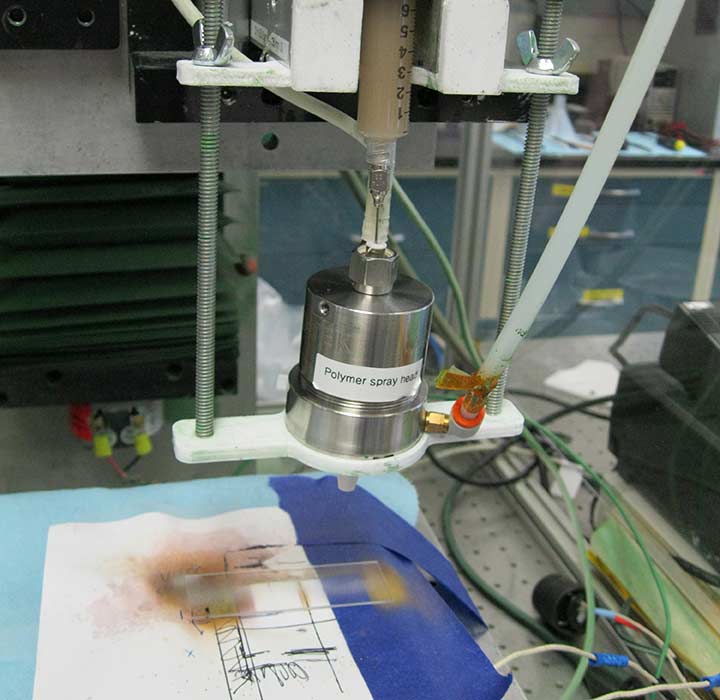High-Throughput, Anti-Soiling Test Station
DuraMAT's evaluation of anti-soiling coatings requires a consistent, yet rapid, methodology. Controlled deposition with an aqueous suspension of representative soils provides a statistically usable sample set while maintaining reasonably accurate test conditions.
For sample characterization, we use spectral analysis via UV/vis spectroscopy (glass) and quantum efficiency testing (assembled test devices).
Core Objective
Location
Sandia National Laboratories (SNL)
Applications
The naturally slow process of soil accumulation makes comparative evaluation of anti-soiling coatings difficult. Our process allows for faster evaluation and prototype development. We can also tailor it to suit a specific soil type.
Availability
These resources are available to SNL scientists and external collaborators.
References
Burton, P. D.; King, B. H. (2014). “Spectral Sensitivity of Simulated Photovoltaic Module Soiling for a Variety of Synthesized Soil Types.” IEEE Journal of Photovoltaics, 4 (3), 890-898.
Hacke, P.; Burton, P.; Hendrickson, A.; Spataru, S.; Glick, S.; Terwilliger, K. (2015). “Effects of photovoltaic module soiling on glass surface resistance and potential-induced degradation.” Photovoltaic Specialist Conference (PVSC). IEEE 42nd, 14-19 June 2015; pp 1-4.
Contact
To learn more about our high-throughput, anti-soiling test station capability, contact Patrick D. Burton.
